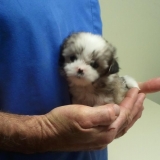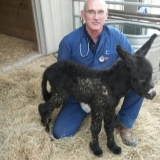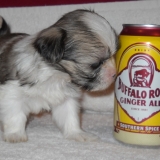Bladder stones can occur in dog and cats and other species as well.
Quick, name something that dogs, cats, turtles and iguanas all have in common. Without having to give it much thought, you probably came up with the correct answer, bladder stones.
What are bladder stones, how do animals get them, what are the symptoms and how can they be treated or prevented? All of these questions come up when an animal is having urinary issues.
Urinary issues are the first symptom that bladder stones may be present. Frequent, repeated attempts at urination and or blood in the urine are the common symptoms that owners notice.
To understand what is going on with bladder stones it is important to know that there are three different kinds of stones. It is important to know what kind of stone it is because each type needs to be addressed differently for treatment and prevention of re-occurrence.
Struvite stones are usually caused by urinary tract infections. The bacteria create an enzyme that leads to an environment favorable for stone formation. Treatment involves both the use of antimicrobial medications to deal with the infections and a special diet that will alter the acidity of the urine and allow the stones to dissolve.
Calcium oxalate stones frequently occur in certain breeds of dog (Yorkies, miniature schnauzers, shih tzus) and also in cats. They cannot be dissolved and require surgery for removal. Dietary management can play an important part in reducing the risk of future stones.
Urate stones are caused by a genetic condition in some breeds of dogs (Dalmatians, Jack Russels and bulldogs) but are also seen with liver disease, especially in dogs or cats with liver shunts. Urate stones can be dissolved in some pets with a combination of special diet and medications.
The two most important considerations for stone prevention are:
-
Diluting the urine by increasing the amount of water the pet takes in. This can be done by feeding canned food which has a higher moisture content or adding water to dry food. There are also some special foods designed to encourage additional water consumption
-
Reducing the amount of the compounds that make up the stones in the diet
Once a stone is removed finding out what type of stone it is makes the difference in deciding how to prevent future stones. The stone will be sent to a special laboratory for identification.
Owners can help in the diagnostic process by keeping a careful record of what foods and treats the pet eats. If a urinary tract issue arises this record will help with establishing effect treatments. Talk with us about stones and their prevention, their treatment and the role that diet plays in stone formation. Your pet will be very glad you did.














